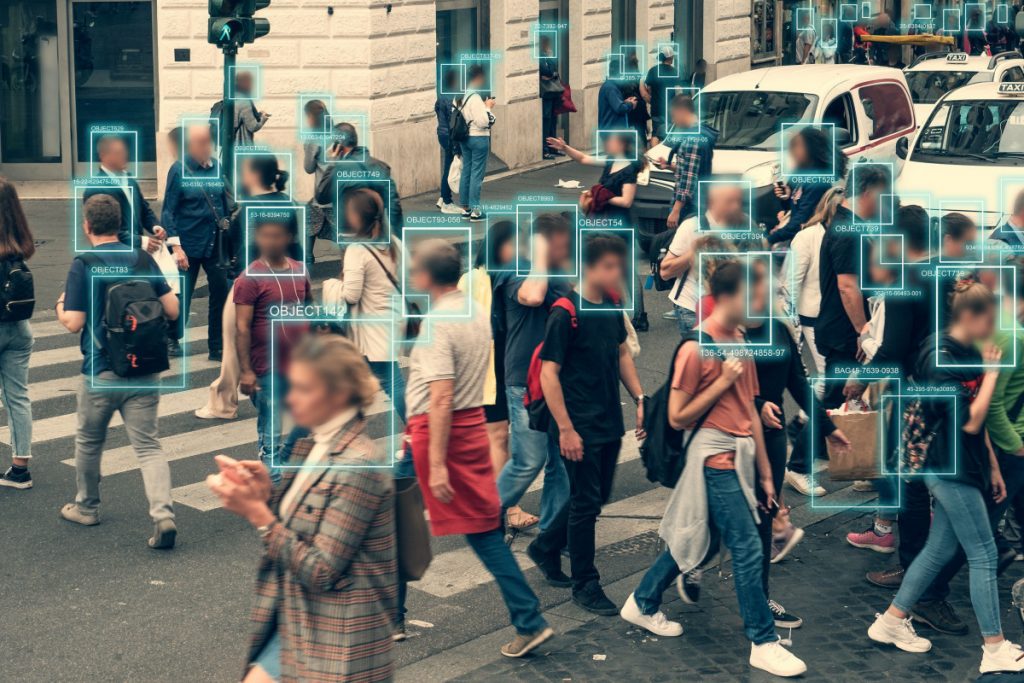Highlights:
- Client Segmentation, Customer Assistance and Content Production are just a few of the many sectors where Generative AI is making its mark!
- By 2025, Generative AI will be producing 10% of all data (now it’s less than 1%) with 20% of all test data for Consumer-facing use cases.
Today, “Generative AI” is on everyone’s lips! The trend is witnessing its progression fast and how. So why is it unexpectedly popular? There are several reasons, but the foremost one is that it produces incredible image results that resemble art, people or even random household objects.
This field of Machine Learning is an Artificial Neural Network known as Generative Adversarial Network (GAN) and was introduced to the world by Ian Goodfellow in June 2014.
Marketing, customer assistance and content production are just a few of the many sectors where the generative AI business is springing up. Replikr, a New Zealand-based company is using generative AI to create customer-service avatars and GoCharlie is a generative AI startup that is offering enterprise applications. AI, a San Francisco-based early-stage startup, has released a generative AI marketing assistant designed to create promotional social media posts.
Generative AI uses various other additional techniques such as Transformers and Variational Auto-encoders.
Below are few insight bells that ring the urgency of adopting this technology.
Gartner has listed generative AI in its ‘Emerging Technologies and Trends Impact Radar for 2022’ Report as one of the most influential and fast emerging technologies that will revolutionize productivity! Below are a few key Gartner predictions considering generative AI.
- By 2025, generative AI will generate 10% of all data (it currently generates less than 1%), with 20% of all test data being for consumer-facing use cases.
- By 2025, 50% of drug discovery and development projects will involve generative AI.
- By 2027, 30% of firms will utilize generative AI to improve the efficiency of their product development.
But, What is Generative AI?
Generative AI refers to unsupervised and semi-supervised machine learning methods that enable computers to use existing information such as text, audio and video files, pictures, and even code to generate new content. The objective is to produce entirely original artifacts that appear authentic.

Source: https://arxiv.org/pdf/1703.10593.pdf
Generative AI has bought in a new era of artificial intelligence that offers better quality results through self-learning from all datasets. It decreases the problems associated with a specific project, drives machine learning algorithms to prevent bias and enables bots to comprehend complex concepts.
The generative AI software banks on complex ML models to forecast the next word or words based on previous word sequences, or the latter photo image based on words describing about the prior images. These languages and text to photo image models have been executed at top technology firms like Google (BERT and LaMDA) and Facebook (OPT-175B, BlenderBot)! The art competition-winning online community Midjourney and the open-source provider HuggingFace have also realized the power of generative AI.
Source: https://arxiv.org/pdf/1703.10593.pdf
The Many Benefits of Generative AI
- Generative AI generates avatars that provide anonymity to persons who do not desire to divulge their identities during job interviews or other professional settings.
- Generative AI enhances ML models, makes them less biased and enables the simulation of more abstract notions.
- Ensures the production of higher-quality outcomes by automatically learning from each data collection
- Facilitates depth estimation without sensors
- Enables content localization and regionalization with Deepfakes
- Permits robots to understand more complex ideas in simulation and the real world.
But Generative AI is not without its set of challenges.
Factors That Set Limitations on Generative AI
1. Pseudo Imagination: Generative artificial intelligence algorithms still require a tremendous quantity of training data to execute jobs. Generative Adversarial Network (GANs) cannot generate wholly novel substances. They merely mix their knowledge in novel ways.
2. Security and amp; Safety:Identity theft, fraud and counterfeiting may rise as a result of generative AI’s ability to produce photos and visuals that are identical to the real thing. Generative AI can be used by malicious actors for deceptive purposes such as phishing, fraud and the creation of fake spam news. Malicious individuals have been detected using generative AI for fraudulent objectives.
3. Unpredictable outcomes: In specific models of generative AI, it is easy to control their behavior, yet they may occasionally produce incorrect or unexpected outcomes.
4. Overestimation of abilities: Generative AI systems need training data to generate art, but the pictures aren’t fresh! These models just combine what they know best.
5. Control limitation:Generative AI can be unstable and unpredictable at times. A GAN might provide output that doesn’t match expectations without an explanation, making it impossible to identify a solution.
Generative AI Applications: Tapping Into The Endless Possibilities
- AI-generative NFTs: Non-fungible tokens (NFTs) are presently one of the most valuable crypto assets. NFTs have nonetheless taken the art world by storm. Artists and collectors can now transact directly, sharing the cost savings from eliminating the middlemen. In 2022, the total market capitalization of NFTs reached approximately $50 billion and this is only expected to increase.
Human-made artwork is more likely than not to be found on the world’s largest NFT marketplaces, such as Nifty Gateway and OpenSea. Those are the tokens that fetch the highest prices. Over $1.1 million was paid for a collection of NFTs created by a robot artist named Botto.
Emerging is a new type of NFT trend that utilizes the power of AI and human creativity. These non-fungible tokens, dubbed AI-Generative Art, employ GANs to generate machine-based art pictures.
- Identity security: Generative AI enables individuals to protect anonymity by substituting avatars for photos. In addition, it may assist businesses in choosing impartial recruiting techniques and research in order to deliver unbiased outcomes.
These avatars gave Russian interviewees a new channel to discuss their experiences with LGBTQ biases – without the fear of being identified as such!
- Image processing: AI is extensively used to analyse low-resolution photographs and generate images that are more accurate, clear and detailed. Google, for instance, said that it has developed models to convert low-resolution photographs to high-resolution photographs.
- Client segmentation: AI enables users to recognize and identify promotional campaign target groups. It learns to predict the response of a target demographic to commercials and marketing campaigns by analyzing the existing data.
Using data, generative AI also facilitates the development of customer connections and offers marketing teams the ability to improve upselling and cross-selling techniques.
Detecting fraud: Several firms have already used AI-powered automated fraud detection procedures. These approaches have enabled them to discover harmful and suspicious behaviors with improved speed and precision. Through predefined algorithms and regulations, generative AI can now detect unlawful transactions, making theft detection easier.
Software development: By automating laborious coding, generative AI has also revolutionized the software development industry. Instead of totally coding the program, IT workers now have the freedom to rapidly design a solution by describing their needs to a generative AI model.
Is Generative AI Supervised Learning?
Generative AI is a framework for semi-supervised training. This type of learning utilizes manually marked training data for supervised training and unmarked data for unsupervised training. By improving the quality of the data, unmarked data are utilized to construct models that can predict more than the marked training set.
GANs, a semi-supervised framework for generative AI, have several benefits over supervised learning, including Overfitting, Human Partiality and Model Partiality.
The Road Ahead for Generative AI
Generative AI, the new-fangled artificial intelligence, is becoming a boon and is slowly impacting several industry verticals. By allowing computers to do more than replace manual labor and take on creative activities, we will likely see a greater range of use cases and sector-wide adoption of generative AI!





























































